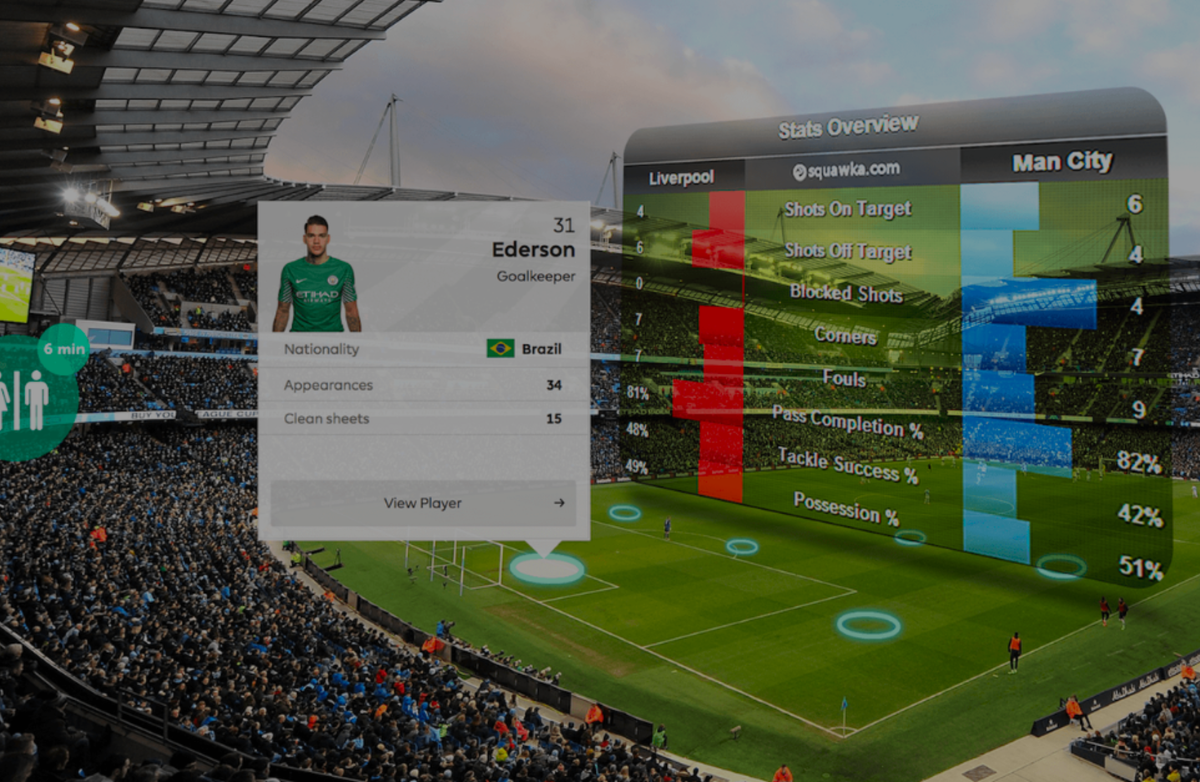Augmenting the Fan Experience

Augmenting fan experience refers to the use of technology, particularly augmented reality (AR) and virtual reality (VR), to enhance the way fans engage with sports and entertainment events. These technologies create immersive and interactive experiences, allowing fans to connect with live events, access behind-the-scenes content, and interact with performers in real time.
👀 Key Takeaways
- The AR market is expected to reach over $97 billion by 2028.
- AR and VR technologies are transforming the way fans engage with sports and entertainment events[4].
- Sports teams and organizations are increasingly adopting AR and VR to enhance fan experiences and drive engagement[2][3].
- AR and VR can provide new revenue opportunities for sports rights holders, teams, and leagues[4].
- Fans are showing growing interest in using AR and VR in sports, with a rising number of sports fans owning or planning to purchase VR devices[4].
🔍 Market Trends
- AR and VR are being integrated into live events to create immersive experiences for fans[1].
- Real-time sports APIs are being used to provide visual game data and automated effects connected to key moments of the game[2].
- AR and VR technologies are being used to increase fan engagement, reach new audiences, and create new revenue opportunities.
- Sports teams are partnering with AR and VR companies to develop innovative fan experiences[3].
- AR and VR are expected to play a significant role in the future of sports fan engagement and monetization.
🏆 Top Businesses
- ARound: Developed an in-stadium AR stats visualization app in partnership with the Minnesota Twins, providing visual game data and automated effects connected to key moments of the game[2].
- ImagineAR: Offers an AR platform that enables sports teams, businesses, and organizations to create mobile phone AR campaigns without a technical background[3].
- Fabric: Helps teams and leagues augment their venue experience with real-time, location-specific fan content, including trivia and polls[7].
🧩 What If Scenarios
- What if AR and VR technologies become an integral part of all live sports events, transforming the way fans experience games in stadiums and at home?
- What if AR and VR enable fans to interact with their favorite athletes and performers in real time, creating a more personalized and engaging experience?
- What if the widespread adoption of AR and VR in sports leads to the development of new business models and revenue streams for sports organizations?
💡 Idea Generation
- Develop AR apps that allow fans to access exclusive behind-the-scenes content during live events.
- Create VR experiences that enable fans to virtually attend sports events from the comfort of their homes.
- Use AR and VR to gamify fan experiences, offering rewards and incentives for engagement.
- Integrate AR and VR into sports training and coaching, allowing fans to learn from their favorite athletes.
- Develop AR and VR experiences that cater to different types of fans, from casual viewers to die-hard supporters.
🔮 Future Impact
- AR and VR technologies will continue to transform the way fans engage with sports and entertainment events, creating more immersive and interactive experiences.
- The adoption of AR and VR in sports will drive new revenue opportunities for sports rights holders, teams, and leagues.
- As more fans own or plan to purchase VR devices, the demand for AR and VR experiences in sports will grow.
- The widespread adoption of AR and VR in sports could lead to the development of new business models and revenue streams for sports organizations.





